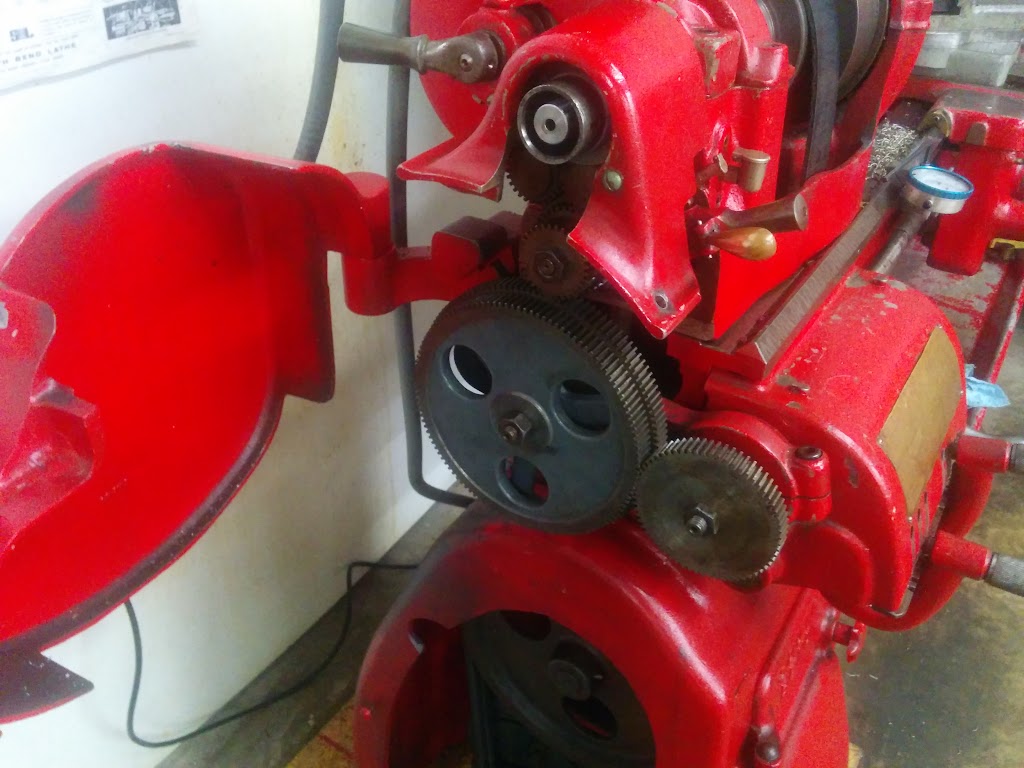iwananew10K
Diamond
- Joined
- Sep 12, 2010
- Location
- moscow,ohio
I was collecting parts for a crazy 10L build, it was going to be a bench mount overhead drive.
I had a boatload of NOS parts, a tailstock from a 12" Taiwanese lathe( early ones had a real thick base that can be cut down to fit the 10L, are 3 MT, 4.5" travel, 1 9/16" diameter quill and are actually very nice tailstocks)
The plan was to use a wide range gearbox and incorporate a sliding gear similar to the single tumbler boxes to introduce a compound gear in the train to get the most common metric threads, notably 1mm.1.25,1.5- likely more but I never finished working it all out and everything is gone now.
Just kind of wondering of anyone ever considered such a plan regarding the gearbox?? It sure seems like it would work and be fairly easy to implement??
Random curiosity has got me wondering.
I had a boatload of NOS parts, a tailstock from a 12" Taiwanese lathe( early ones had a real thick base that can be cut down to fit the 10L, are 3 MT, 4.5" travel, 1 9/16" diameter quill and are actually very nice tailstocks)
The plan was to use a wide range gearbox and incorporate a sliding gear similar to the single tumbler boxes to introduce a compound gear in the train to get the most common metric threads, notably 1mm.1.25,1.5- likely more but I never finished working it all out and everything is gone now.
Just kind of wondering of anyone ever considered such a plan regarding the gearbox?? It sure seems like it would work and be fairly easy to implement??
Random curiosity has got me wondering.












